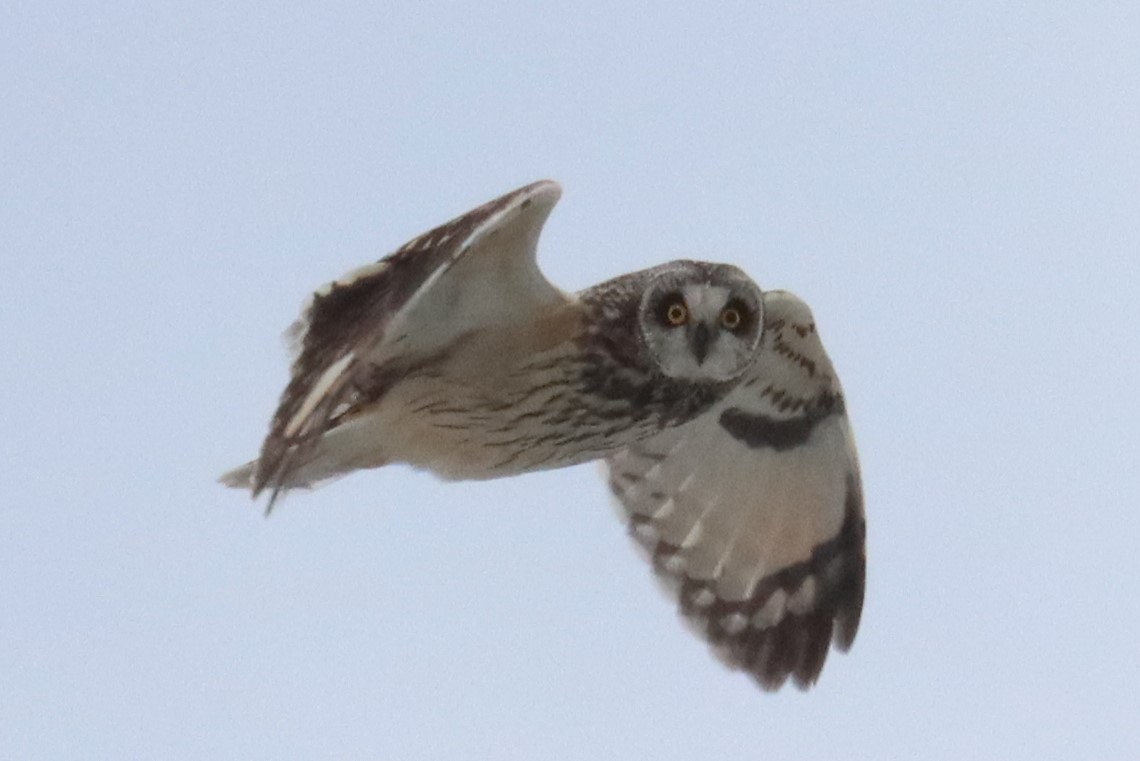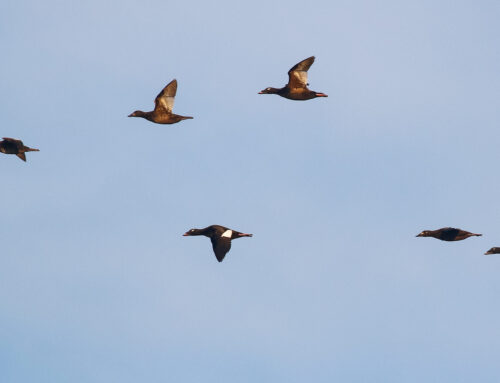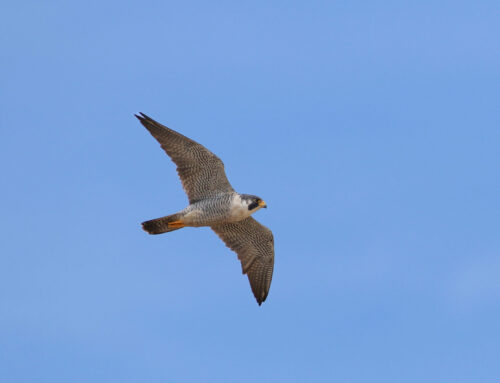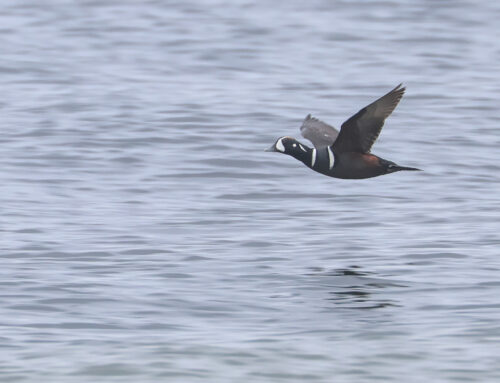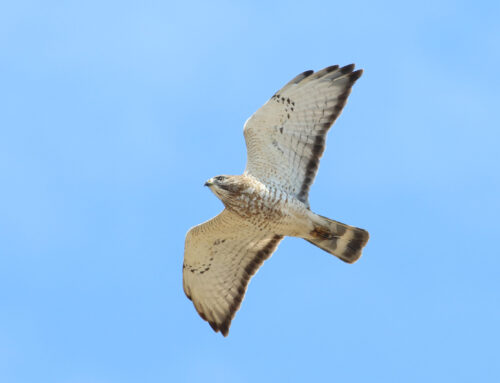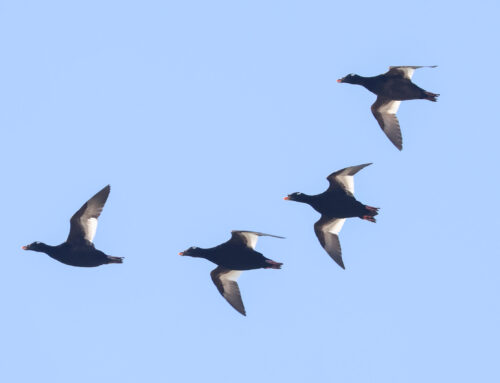While the WPBO spring raptor count began a bit later this year (historically starting on March 15), the first days of the 2023 count have already been plenty busy while generating some great flights. I arrived at the platform on the first morning of April 8 and was greeted with clear blue skies, sun, and a mild southeast wind (that would gradually shift to east by late morning into the afternoon). Only an hour had passed before migrants began to appear to the south of the Point — kettles of Red-tailed Hawks and Turkey Vultures materializing as distant flecks of silhouetted darkness against the blue backdrop of morning sky. The easterly component of the winds resulted in the migrant groups taking their time to reach the Point, if they did at all; however, a mix of buteos (red-tailed and red-shouldered) began gliding directly overhead. By early afternoon, well over a hundred Red-tailed Hawks had made their way through with kettles as large as 30 birds spiraling northward as the sun warmed the earth while providing thermals. The late morning also brought a nice flight of Golden Eagles (all subadult birds) as the large raptors pushed their way north into the blustery winds off of the bay.
This first day of the spring raptor count was followed by a more “seasonal” early April day as raw, blustery east winds churned off of the bay while a frosty gray sky welcomed the morning. Wind speeds early in the morning managed to do a better job at tilting scopes along the platform than promoting favorable raptor migration; however, conditions improved dramatically by late morning and welcomed a nice afternoon flight along the Point. As wind speeds decreased, a flurry of Sharp-shinned Hawks, Northern Harriers, Rough-legged Hawks, and American Kestrels began to pour over the dunes. The late afternoon kestrel push seemed to persist for hours (dominated mostly by adult females) as the small falcons continued to appear over the distant treeline before darting over the dunes with their charismatic, floppy wingbeats, with 25 passing the final two hours of the count.
As fruitful as the flights had been with easterly winds, the forecast for Monday brought southwest winds and warmer temperatures, and raptor migrants hopped on the assisting drafts by the hundreds! The morning began with a northbound Short-eared Owl, appearing in the first few minutes of the count, being harassed by a local pair of crows while making its way over the nearby lighthouse. With the sun generating early afternoon thermals coupled with assisting winds, kettles of migrant Red-tailed Hawks spiraled to the sky’s ceiling (mixed with a medley of roughies, kestrels, sharpies, harriers, and vultures) and pushed out towards the lake after pooling up in the sky directly above the Point. A beautiful chocolate-brown adult dark-morph Red-tailed Hawk mixed in with a large kettle of 30 or so, spending several minutes thermaling directly over the platform before continuing onward. By the end of the count, just over 500 migrant raptors were tallied on the day.
With only a few days of counting on the books before penning this first blog entry, the truncated spring raptor count is already off to a promising start! A total of 13 migrant raptor species have already been documented in just the first three days (with all of those day counts being in the triple digits and nearly totaling 1,000 migrants overall). Here is to continued optimism that this upcoming week’s weather remains favorable for raptor movement as the predicted southwest winds shuffle more migrants northward to the Point and onward.
– Jess Cosentino
Spring Raptor Counter
Featured image: Short-eared Owl. Photo by Jess Cosentino

